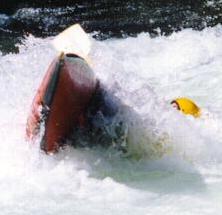“Father and Child, Blazing New Trails Together”
Why do parents and children join Y-Adventure Guide Programs? Is it something magical? Yes, say the many millions of families who have been involved in these programs for more than 80 years!
It is magic when parents and their children are having fun together - laughing, loving, growing, and learning together. These are memories that will last at least two lifetimes, and they can form a meaningful relationship that can last forever.
But for those who have completed two or three years of Y-Adventure Guide Programs and want to continue, there is a way to do so – through the Y-Trails programs, referred to as Trailblazers. The Y-Trail Programs make it possible for the father-son, father-daughter, mother-son, mother-daughter relationships to continue but in a different way, recognizing the needs of 9 to 12 year olds. Y-Trail Programs are aimed at helping the developing child grow toward independence without losing sight of the interdependence of family members. In these programs the youngsters take on more of a leadership role and greater responsibility for the programs. Parents who participate learn to appreciate their own changing roles, as their children grow older. It is not necessary to be a prior member of the Y-Adventure Guide program to be a Trailblazer. Committing to time together with your child is valuable at any start point.
A link to our handbook : TrailblazerManual.doc
History of the Y-Trails Program
Since the beginning of the YMCA Indian Guide Programs in 1926, a few groups every year have continued the significant parent/child group relationships initiated with the younger child programs. Such groups have been called Senior Y-Guides, Y-Warriors, Y-Adventure Guides, Y-Voyagers, Y-Rangers, and Y-Pathfinders. Based on the work of several task forces and the field-testing of many different models, the name of the Y-Trailblazers was chosen for the program model in 1969. As the number of Indian Guide Programs for younger children grew with the addition of Maidens (mother/daughter), Princesses (father/daughter), and Braves (father/son), so did the need for older child programs that would follow the pattern of the younger child programs. In the past several years, many different formats and themes have proved to be successful.




